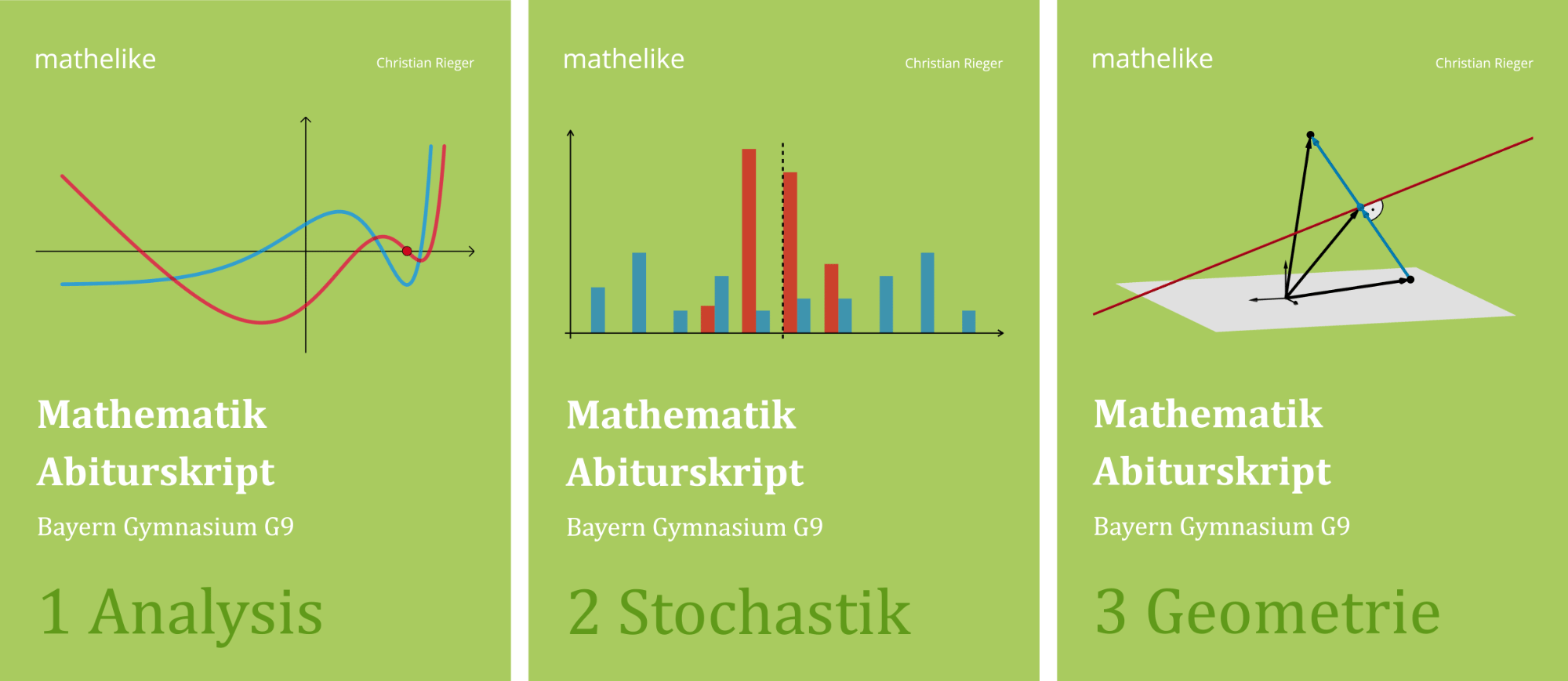Gegeben ist die in \(\mathbb R \backslash \{0\}\) definierte Funktion \(f \colon x \mapsto \dfrac{1}{x^2}+1\).
Geben Sie eine Gleichung der senkrechten und eine Gleichung der waagrechten Asymptote des Graphen von \(f\) an.
(2 BE)
Lösung zu Teilaufgabe 1a
\[f(x) = \frac{1}{x^2} + 1;\; D_f = \mathbb R \backslash \{0\}\]
Gleichung der senkrechten Asymptote: \(x = 0\) (\(y\)-Achse)
Gleichung der waagrechten Asymptote: \(y=1\)
Asymptoten gebrochenrationaler Funktionen
Eine Funktion \(f(x) = \dfrac{p(x)}{q(x)} = \dfrac{\textcolor{#cc071e}{a_{m}}x^{\textcolor{#cc071e}{m}} + a_{m - 1}x^{m - 1} + \dots + a_{1}x +a_{0}}{\textcolor{#0087c1}{b_{n}}x^{\textcolor{#0087c1}{n}} + b_{n - 1}x^{n - 1} + \dots + b_{1}x + b_{0}}\), die sich als Quotient zweier ganzrationaler Funktionen (Polynome) \(p(x)\) und \(q(x)\) darstellen lässt, heißt gebrochenrationale Funktion. Die Nullstellen des Nennerpolynoms \(q(x)\) können nicht in der Definitionsmenge \(D_{f}\) enthalten sein und werden als Definitionslücken bezeichnet.
Senkrechte Asymptoten
Wenn an einer Definitionslücke \(x_{0}\) einer gebrochenrationalen Funktion \(f\)
\(\begin{align*}\lim \limits_{x\,\to\,x_{0}^{-}}f(x) = +\infty \enspace &\text{oder} \enspace \lim \limits_{x\,\to\,x_{0}^{-}}f(x) = -\infty \\[0.8em] \text{und} \enspace \lim \limits_{x\,\to\,x_{0}^{+}}f(x) = +\infty \enspace &\text{oder} \enspace \lim \limits_{x\,\to\,x_{0}^{+}}f(x) = -\infty \end{align*}\)
gilt, so nennt man \(x_{0}\) eine Polstelle von \(f\) und die Gerade mit der Gleichung \(x = x_{0}\) ist senkrechte Asymptote des Graphen von \(f\).
Waagrechte und schräge Asymptoten
Der Graph einer gebrochenrationalen Funktion \(f\) hat für \(x \to - \infty\) bzw. \(x \to + \infty\) im Fall
| \(\textcolor{#cc071e}{m} < \textcolor{#0087c1}{n}\): | die \(x\)-Achse \((y = 0)\) als waagrechte Asymptote, |
| \(\textcolor{#cc071e}{m} = \textcolor{#0087c1}{n}\): | eine waagrechte Asymptote parallel zur \(\boldsymbol{x}\)-Achse mit der Gleichung \(y = \dfrac{\textcolor{#cc071e}{a_{m}}}{\textcolor{#0087c1}{b_{n}}}\), |
| \(\textcolor{#cc071e}{m} = \textcolor{#0087c1}{n} + 1\): | eine schräge Asymptote, |
| \(\textcolor{#cc071e}{m} > \textcolor{#0087c1}{n} + 1\): | keine waagrechte oder schräge Asymptote. |
Begründung (nicht verlangt)
Senkrechte Asymptote:
Die gebrochenrationale Funktion \(f \colon x \mapsto \dfrac{1}{x^2}+1\) besitzt die Polstelle \(x = 0\), in deren Umgebung \(f\) beliebig große positive Werte annimmt (\(f\) divergiert gegen \(+\infty\)). Der Graph von \(f\) nähert sich dabei asymptotisch der senkrechten Gerade mit der Gleichung \(x = 0\) an (senkrechte Asymptote).
linksseitige Grenzwertbetrachtung:
\[\lim \limits_{\underset{x \,\textcolor{#cc071e}{\boldsymbol{<}} \,0}{x\,\to\,0}} \bigg( \frac{1}{\textcolor{#e9b509}{\underset{\to\,0^+}{x^2}}} + 1 \bigg) = +\infty\]
rechtsseitige Grenzwertbetrachtung:
\[\lim \limits_{\underset{x \,\textcolor{#0087c1}{\boldsymbol{>}} \,0}{x\,\to\,0}} \bigg( \frac{1}{\textcolor{#e9b509}{\underset{\to\,0^+}{x^2}}} + 1 \bigg) = +\infty\]
Waagrechte Asymptote:
Waagrechte oder schräge Asymptoten bestimmen bei gebrochenrationalen Funktionen das Verhalten des Graphen für \(x \to -\infty\) bzw. \(x \to +\infty\).
\[\lim \limits_{x\,\to \, \pm \infty} \bigg( \frac{1}{\textcolor{#e9b509}{\underset{\to\,+\infty}{x^2}}} + 1 \bigg) = 1\]
Das bedeutet, dass sich der Graph von \(f\) für \(x \to \pm \infty\) asymptotisch der waagrechten Gerade mit der Gleichung \(y = 1\) annähert (waagrechte Asymptote).


